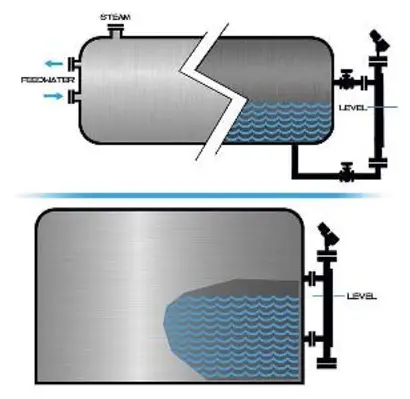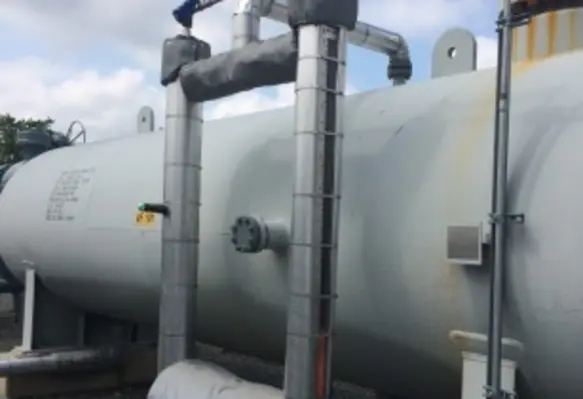The magnetic level indicator is now widely used throughout process industries as an effective visual indicator
A magnetic level indicator is often used in applications where a sight glass (or glass sight gauge) is either ill-suited based on process variables or is underperforming based on plant requirements. These can include enhanced safety for personnel; environmentally risky situations including media leakage or fugitive emissions; need for maintenance reduction; or need for high visibility from a distance. Typical shortcomings of glass sight gauges include:
• High pressures, extreme temperatures, deteriorating seals/rings/gaskets, and toxic or corrosive materials may cause a risk of fugitive emission of dangerous substances.
• The glass in a sight glass can become quickly discolored, thus decreasing level visibility, or it can acquire microfractures, which can become a personnel safety issue if left undetected.
• Liquid/liquid interfaces can be very difficult to read in a sight glass particularly if the liquids are of similar colour. Clear liquids can also be difficult to see in a sight glass.
• Liquids that tend to coat or build-up on surfaces can hinder visibility by forming an opaque film on the glass.
• To cover a large measuring span, sight glass assemblies typically must be staggered using multiple sections.

The key reasons for selecting a magnetic level indicator over a sight glass are:
• Improved safety due to the absence of fragile glass and a substantially reduced number of potential leak points.
• Greatly increased visibility.
• Reduced maintenance.
• Easier initial installation and addition of transmitters and switches without interrupting the process.
• Dual-technology redundancy, with the addition of transmitters or switches, for improved safety.
• Lower long-term cost of ownership and legitimate return-on-investment benefits.
• Single chamber measurement over 20 ft (6 m) without staggering chambers.
Safety
The obvious safety benefit of the MLI over a sight glass is reduced chance of breakage. If the process fluid is under extreme pressure or temperature, the likelihood of sight glass breakage is increased. The pressure boundary of an MLI is made of robust metal, frequently the same as the vessel piping, making MLIs as safe as the surrounding piping system itself. The indicators, transmitters, and switches are all mounted externally and, therefore, are unaffected by toxicity, corrosiveness, or other process fluid characteristics.
Another safety benefit is that the chemical compatibility with the fluid in an MLI is restricted to only three components, the metallic chamber, gaskets and float. With glass sight gauges, the process fluid may have chemical compatibility issues with any of the wetted materials – glass, metal, or sealants.
Maintenance
MLIs are virtually maintenance free once installed because the indicator never touches the process fluid. With sight glasses, the gauges must be periodically checked for leaks and cleaned on a regular basis. Scaling, etching and build-up on the glass from the process fluid can cause the sight glass to become unreadable.
Visibility
Visibility of the fluid level from long distances is another major reason for selecting an MLI over a sight glass gauge. Sight gauge level indicators are intended to be viewed at maximum distances of around 10 ft (3 m). However, the bright contrasting colors of the flags or a fluorescent shuttle on an MLI permit visible level indication at distances up to 100 ft (30 m) or greater. Newer, more advanced visual indicators, such as those from AMETEK-Orion Instruments, have viewing ranges up to 200 ft (60 m).
For more information download our Technology brochure or our 'Sight Glass Gauges – the Hidden Cost Center' Whitepaper.










